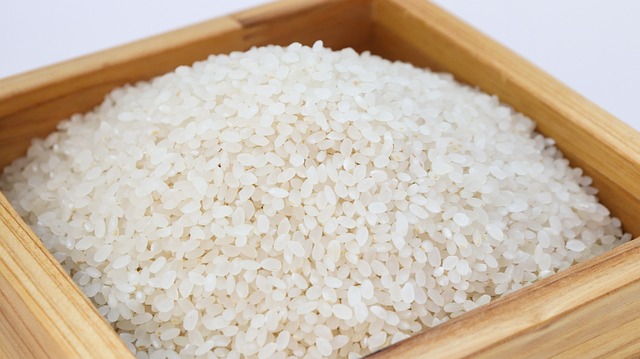
Introduction
White Rice Calories one of the most widely consumed staple foods on the planet. Whether as a side dish, as a foundation for curries and stews, or as part of regular meals in so many cultures, white rice is a staple in kitchens all over the world. And yet, with growing interest in diet and nutrition, many people are now wondering: How many calories in white rice? And what does this mean for our overall health and well-being?
In this post, we’re going to dive into white rice calories, what they do to your diet, and how you can still indulge in rice without compromising on your nutritional balance.
What Is White Rice Calories?
White rice calories is a form of rice that has been refined and polished to eliminate the bran and germ layers, leaving it a white, shiny grain. It’s usually classified into:
- Long-grain white rice: Remains fluffy and apart when cooked.
- Medium-grain white rice: Slightly softer and more moist.
- Short-grain white rice: Becomes stickier and is consequently used in foods such as sushi.
A Brief History and Cultural Significance

Rice has been grown for millennia, particularly in Asia, where it is intricately part of the culinary and cultural heritage. Rice is not only food in much of the world it’s tradition, celebration, and identity.
Nutritional Composition Overview
White rice is primarily composed of carbohydrates, some protein, and little fat. Because it undergoes a milling process, it lacks more vitamins and minerals compared to whole grains such as brown rice.
Caloric Content of White Rice
Average Calorie Count per Serving
One of the most popular questions is how many calories are in white rice. On average:
- 1 cup cooked white rice (approximately 158 grams) has approximately 200 calories.
This can be slightly different based on variety and type of cooking.
Comparison to Other Types of Rice
- Brown rice: Slightly more calories due to additional fiber and nutrients (about 215 calories per cup).
- Wild rice: Fewer calories and more protein (about 165 calories per cup).
Understanding Serving Sizes and Their Impact
Portion size is very important in how many calories you are taking in. Having 2 or 3 cups at one meal can easily total 400–600 calories just from the rice, without counting the rest of the meal.
The Nutritional Breakdown
Macronutrients
- Carbohydrates: Approximately 45 grams per cup; rice is mostly a source of quick-release energy.
- Protein: Approximately 4 grams per cup.
- Fats: Less than 1 gram; practically zero.
Micronutrients
White rice contains less:
- B vitamins (thiamin, niacin, folate)
- Iron
- Magnesium (less than brown rice)
How Processing Influences Nutrition
Milling removes the bran and germ, where most of the nutrients are contained. Although this enhances shelf life and texture, fiber and beneficial vitamins are diminished.
Health Consequences of White Rice Consumption
Advantages
- Easily digestible: Easy on the stomach, ideal for individuals recovering from illness.
- Quick energy source: Particularly beneficial for athletes or individuals with high-energy requirements.
Disadvantages
- High glycemic index: May lead to quick blood sugar spikes.
- Lower in nutrients: Than whole grain counterparts.
Considerations for Specific Groups
- Athletes: May be beneficial due to its quick energy.
- Diabetics: Should watch portion size and consider eating with fiber-containing foods.
White Rice in Various Diets
Role in Traditional Diets
In nations such as Japan, India, and China, rice is a dietary and cultural staple. It’s typically consumed with fermented foods, proteins, and vegetables to make up a balanced dish.
White Rice in Contemporary Dietary Trends
- Low-carb diets: Typically avoid white rice calories.
- Balanced diets: Include white rice in limited amounts.
Alternatives to White Rice
- Brown rice: More fiber and nutrient-dense.
- Quinoa: Complete protein and high in fiber.
- Cauliflower rice: Low in calories and carbs, perfect for weight control.
Cooking Techniques and How They Affect Calories
Typical Cooking Techniques
- Boiling: Preserves the simple caloric profile.
- Steaming: The same as boiling; little effect on calories.
- Frying: Double or triple the calorie value by adding oil.
Effect of Additions
- Butter or oil: 100–150 added calories per tablespoon.
- Broths or stocks: Flavor with little change in calories.
Habits for Healthier Preparation
- Reduce oil or butter usage to a minimum.
- Prepare with vegetables and lean proteins for a balanced meal.
- Practice portion control with measuring cups.
Portion Control Strategies
Importance of Mindful Eating
It is possible to gain weight eating too much even nutritious foods. Pay attention to how much you are eating.
Tools and Methods
- Use a measuring cup for accuracy.
- Visual cues: 1/2 cup of rice fits into a cupped hand.
Balancing with Other Food Groups
Include:
- Vegetables: Adds fiber and bulk.
- Proteins: Delays digestion.
- Healthy fats: Makes you feel fuller longer.
Myths vs. Facts Regarding White Rice and Calories
Common Misconceptions
- White rice calories makes you fat.
- You can’t eat white rice calories on a healthy diet.
Facts Supporting Moderate Consumption
- Weight gain is based on overall caloric intake, not a single food.
- Healthy populations in many countries consume white rice calories daily with regular meals.
Role of Context in Dietary Choices
What is most important is your overall diet, activity level, and health objectives. White rice calories can definitely be part of a healthy lifestyle.
Conclusion
White rice is more than a staple; it’s an international food icon. Knowing white rice calories informs us on how to include it in our diets. At about 200 calories per cup, it’s a moderate energy source that can fuel an active lifestyle when eaten in moderation.
By being mindful of portion size, cooking, and nutritional combinations, you can still enjoy white rice as part of a healthy, balanced diet. The trick is moderation, context, and mindful eating.
So, how does white rice fit into your diet? Leave your thoughts, experiences, or favorite rice recipes below!
